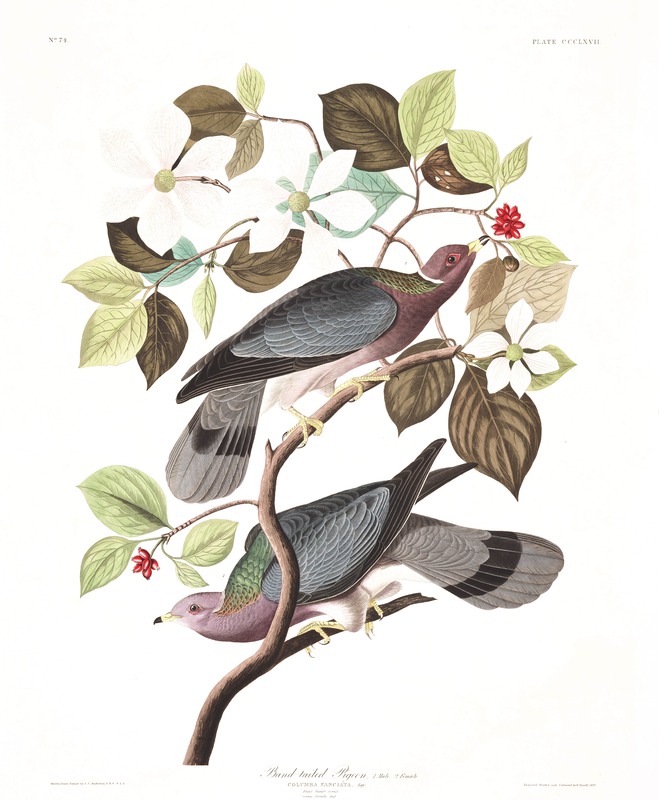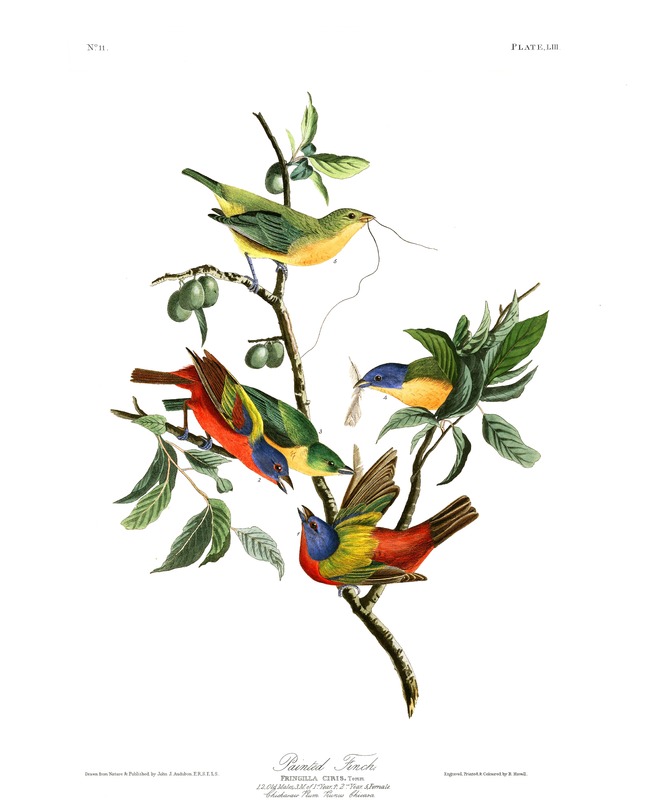Introduction
The United States of America is home to over nine hundred species of birds, many of which can be found in and around backyards and populated towns and cities. Bird enthusiasts know these backyard birds formally as Passeriformes, a vast order that includes common birds like crows and sparrows as well as brightly colored but lesser known birds like grosbeaks and orioles, allowing even the most novice of birders to observe natural wonders simply by looking up once they know what to look for.
In 1820, naturalist John James Audubon set out to record and illustrate every bird in North America, and by 1840 he had captured over five hundred species and published his research in Birds of America, a work that can be called one of the most influential collections of wildlife illustration and research in history. Audubon's work documenting these species has impacted on ornithology as a field and birding as a hobby by providing researchers and hobbiests with field notes and realistic illustrations. Backyard Birds: North American Ornithology Through the Eyes of John James Audubon invites anyone from inexperienced birders-to-be to seasoned ornithologists to connect with the wonders of the natural world on a personal level by examining the unique beauty of North American backyard birds as captured by Audubon.
Disclaimer
When discussing Audubon’s legacy, however, it is impossible to overlook the tension between his golden legacy as a researcher and his unpleasant personal legacy as a racist slave-owner in the late eighteenth and early-to-mid nineteenth centuries. This tension is not one taken lightly by any birder or birding organization that associates themselves with the Audubon name, and historians and birders have discussed and critically analyzed it many times within the last few decades. With that being said, it is not a tension that will be discussed in depth here. In response to public criticism in 2023, the National Audubon Society board announced they would retain their name, stating that they acknowledge and reckon with the racist legacy of John J. Audubon but believe the name to be representative of more than the work of one man, asserting that Audubon today stands for equality and justice. It is in respect to that decision and the legacy continued by the Audubon of today rather than in respect to John J. Audubon as a person that this exhibit examines Birds of America, the birds within it, and John J. Audubon’s ornithological career.
Curatorial Statement
North America is home to a vast number of birds, many of which can be found without leaving home. Backyard Birds: North American Ornithology Through the Eyes of John James Audubon functions as an introductory field guide that shares the wonders of North American backyard birds with people who may not know anything about them using digitized versions of John James Audubon’s Birds of America plates. Though I include information and research on both Audubon and Birds of America within this exhibit, the majority of my research focused on the birds that are the subject of the plates rather than the plates themselves or the man who created them, and I have structured Backyard Birds in a manner that intends to emphasize that central focus.
The Field Guides are organized by family and contain basic information on thirty-one species across thirteen families. Selecting objects to include in the Field Guides was a convoluted process, and many objects had to be omitted because they did not pass the tests they needed to. In order to ensure that the provided guides are useful and comprehensive for novice birders, each plate chosen must depict only one species, that species must be common or unique enough to warrant an entry, and that species must be able to be found at standard backyard bird-feeders. As I built the exhibit, I found space and justification for more and more objects, but I found quickly that it is impossible to include every relevant species in an exhibit of this size. With that being said, I believe that this exhibit achieves its central goal of showing the incredible variety and complexity of North American backyard birds to anyone, even someone with no knowledge on birds or birding.
Elliot Foran
Special Thanks
Special thanks to the National Audubon Society for their digital library of John J. Audubon’s original plates and comprehensive field guides, eBird and TheCornellLab for the use of their annual range maps, the John James Audubon Center at Mill Grove in Audubon, and the Montgomery County Audubon Collection. This exhibit would not be possible without their generosity.

